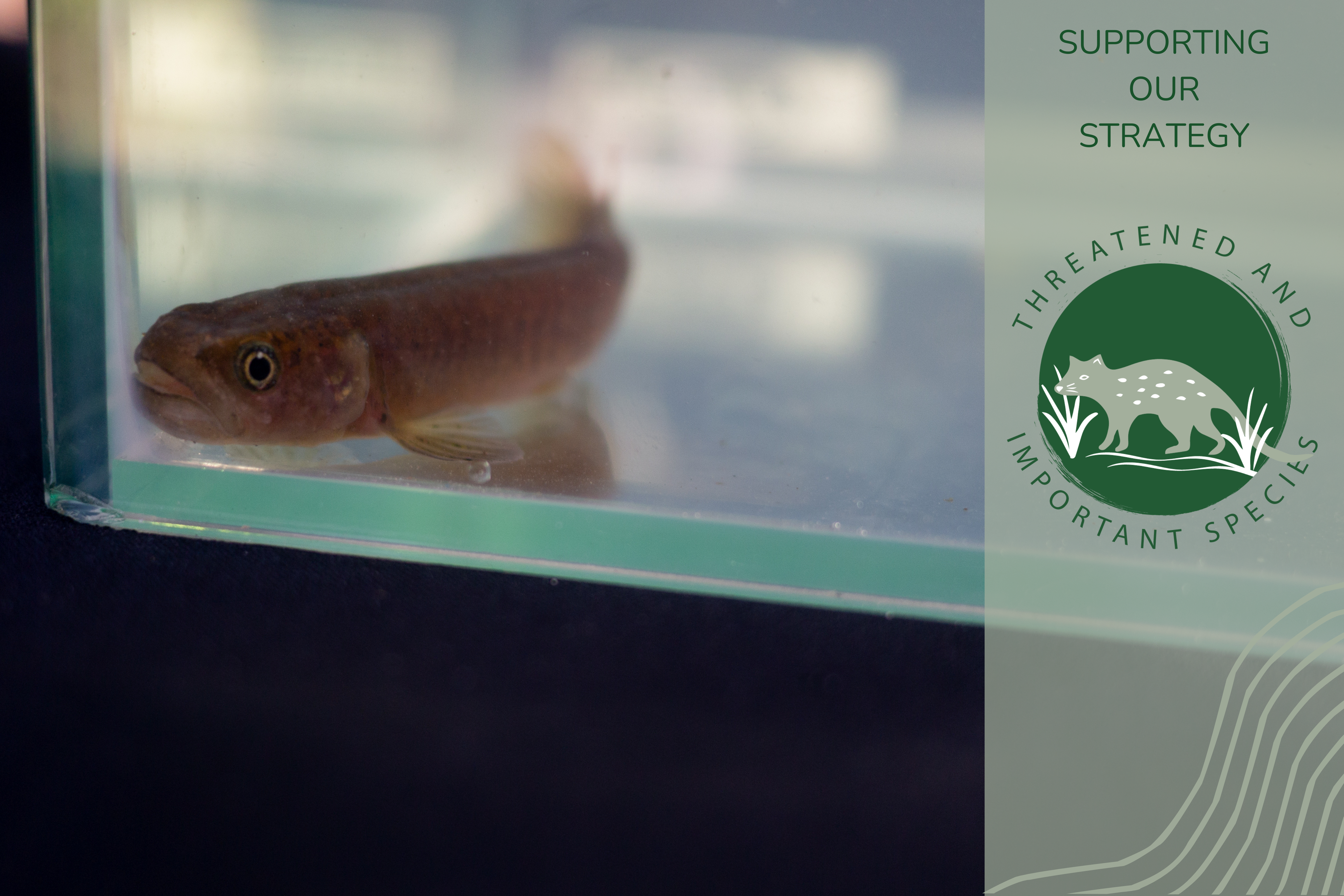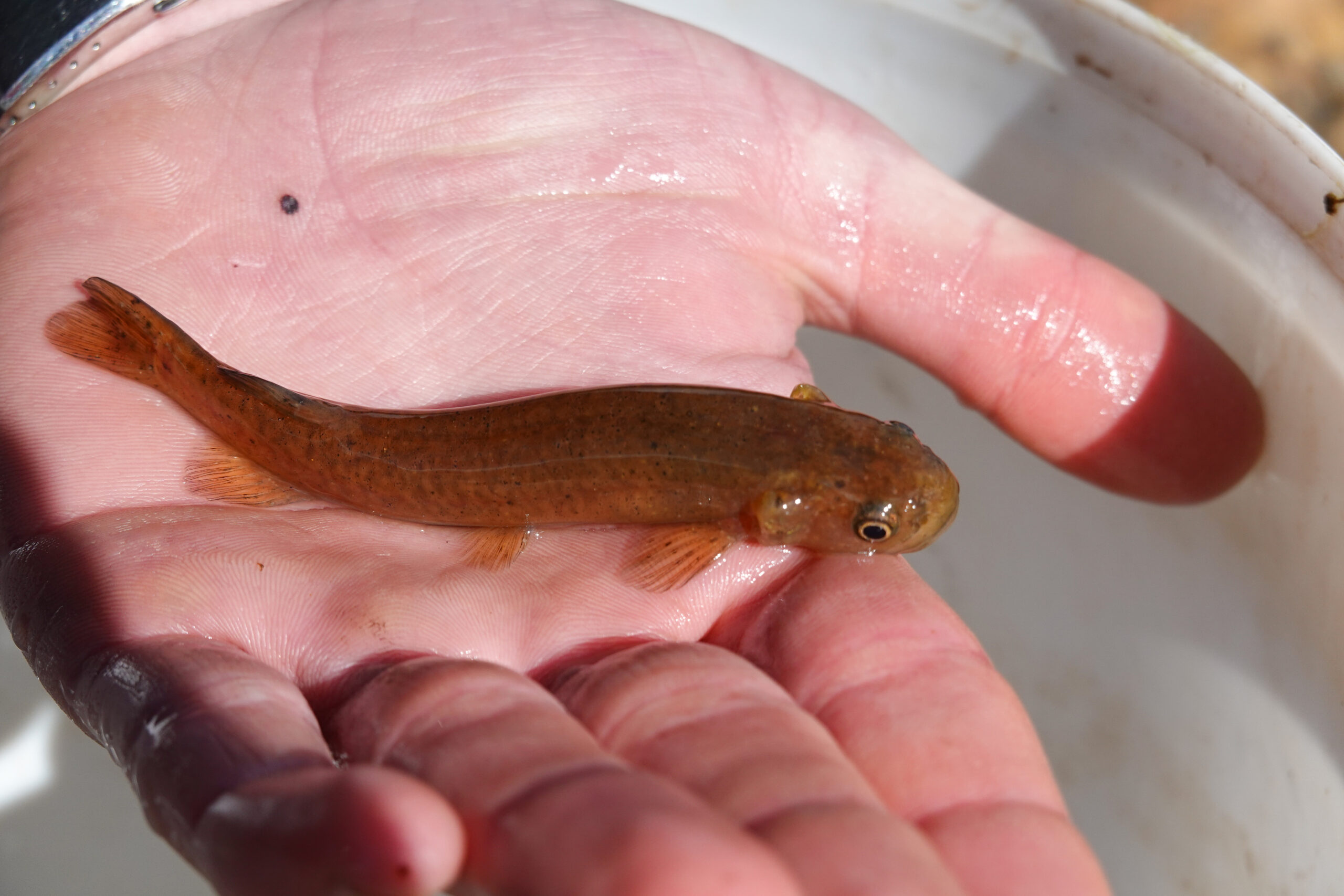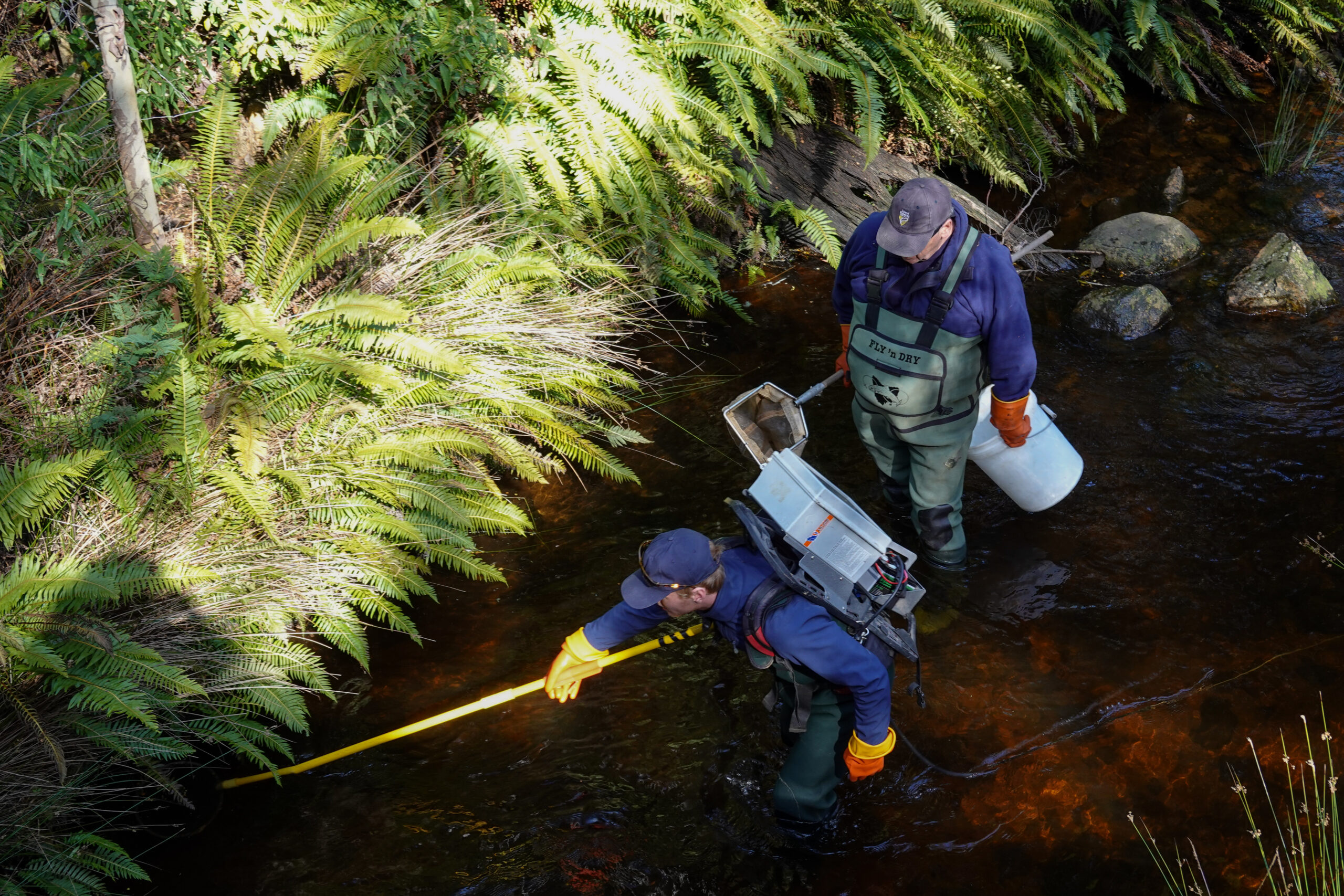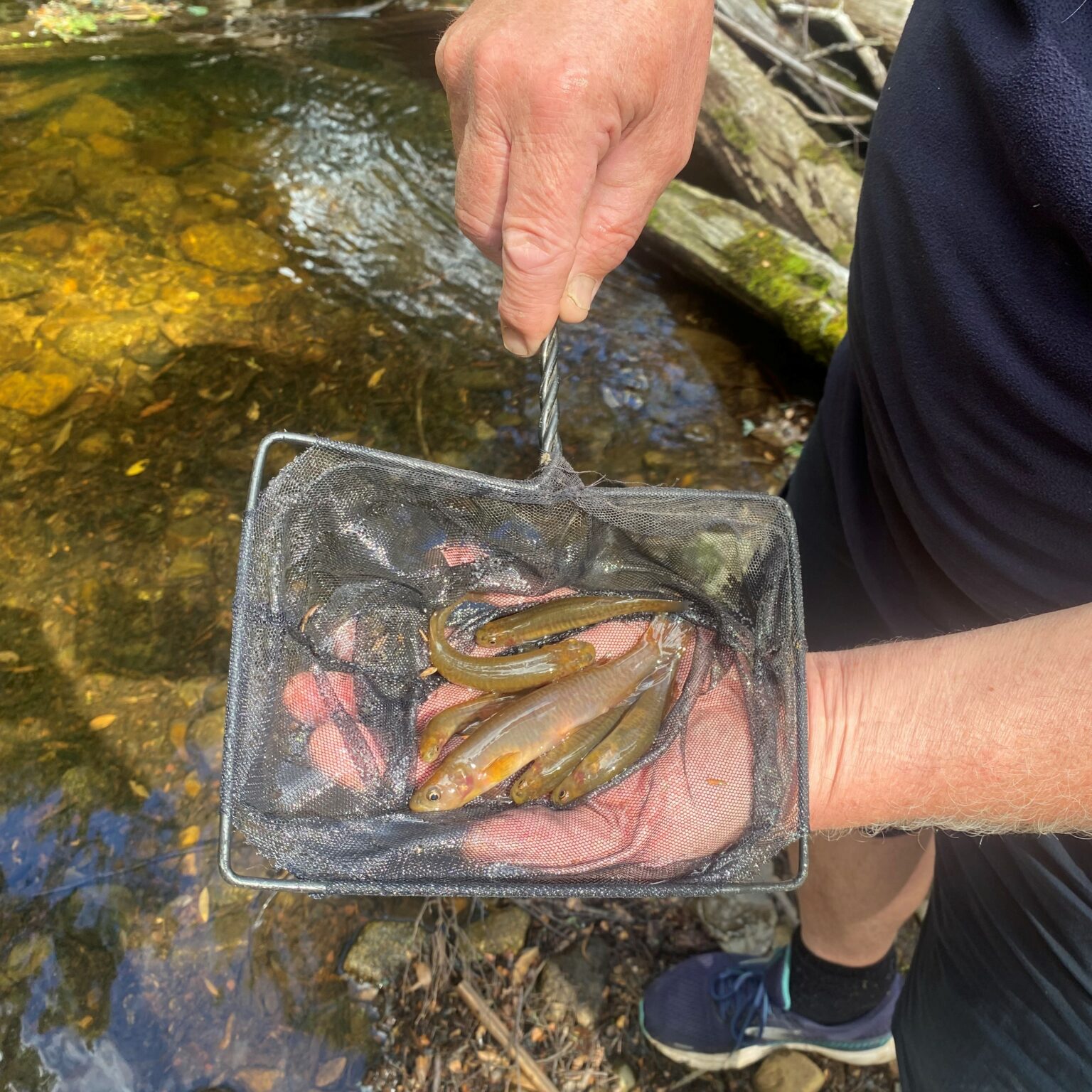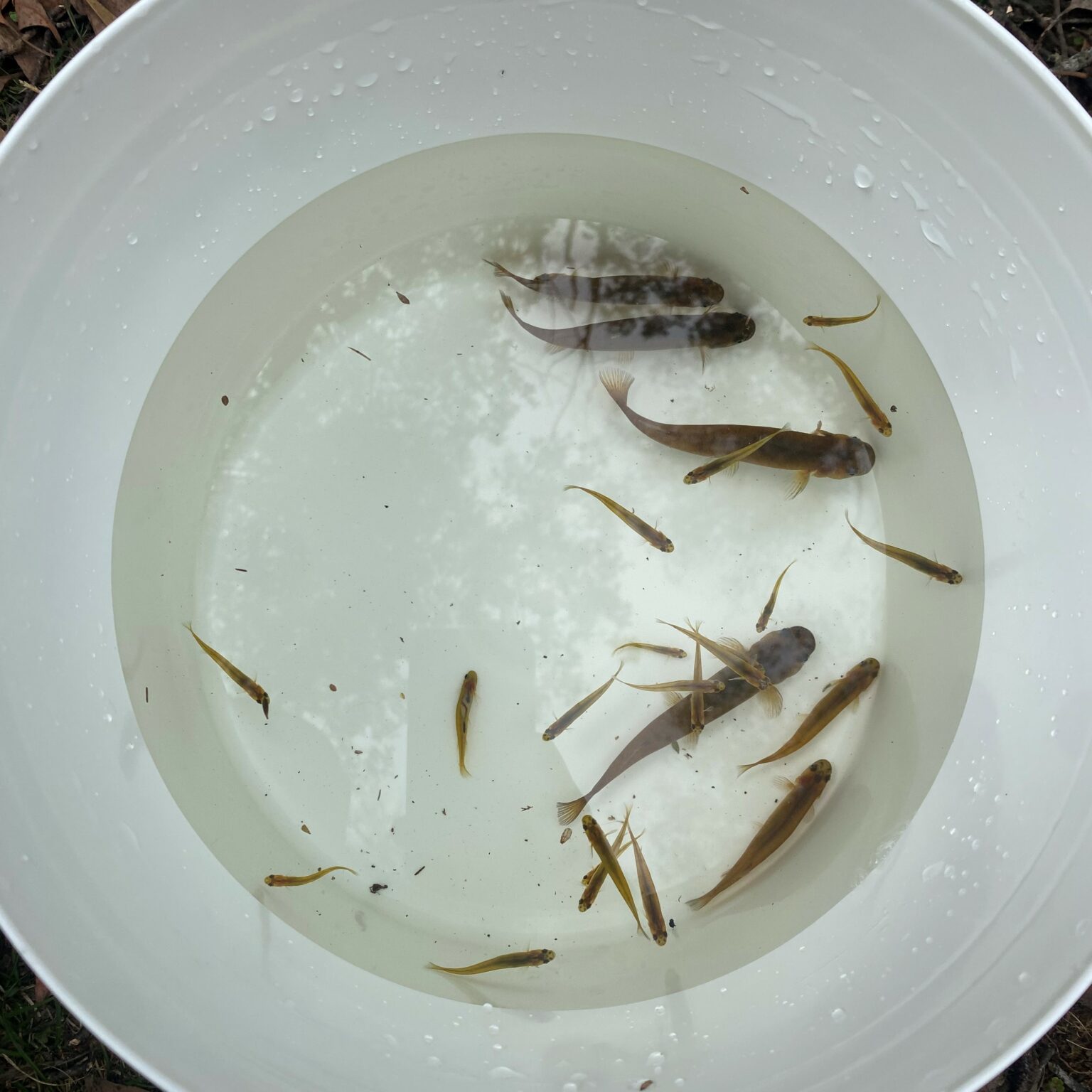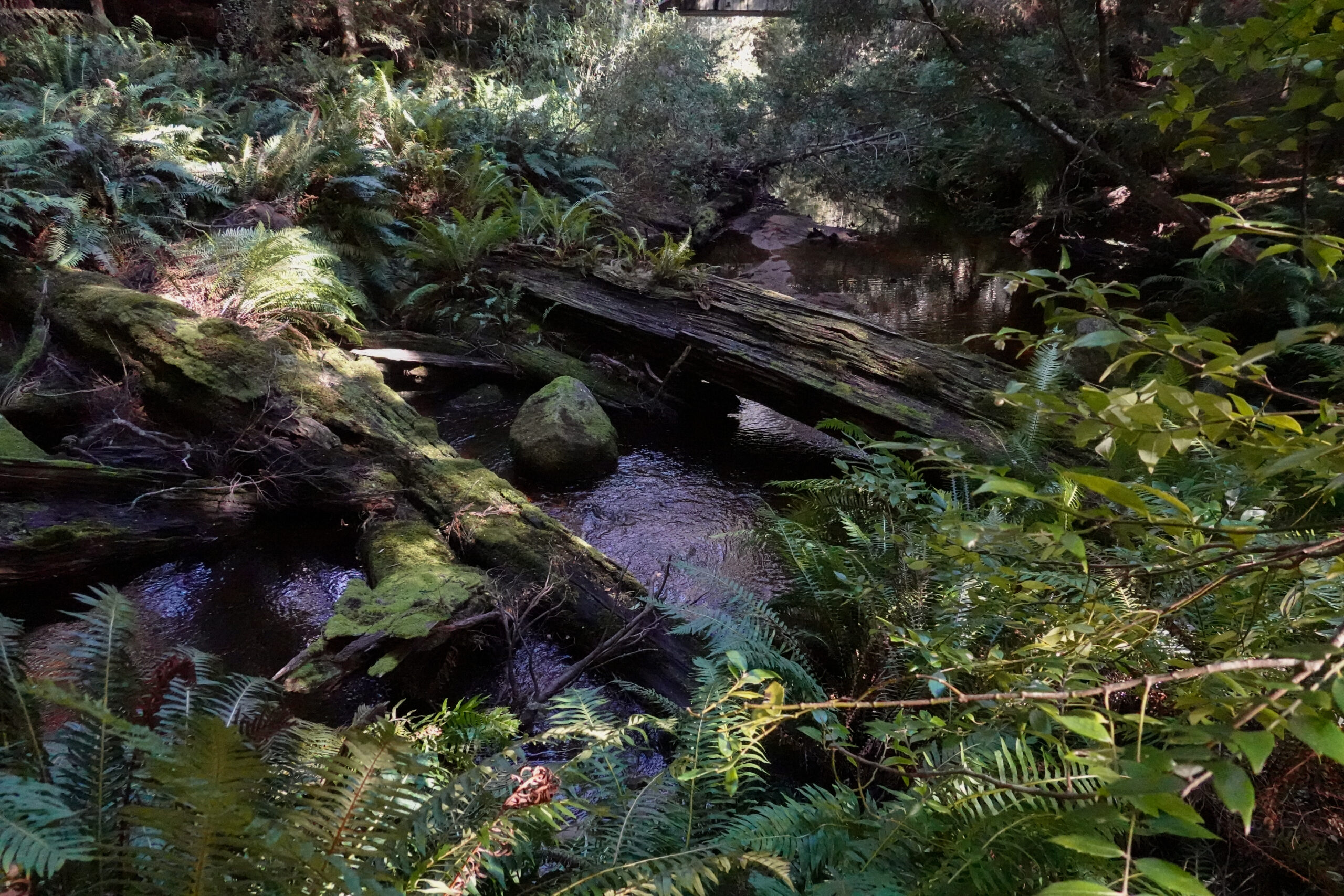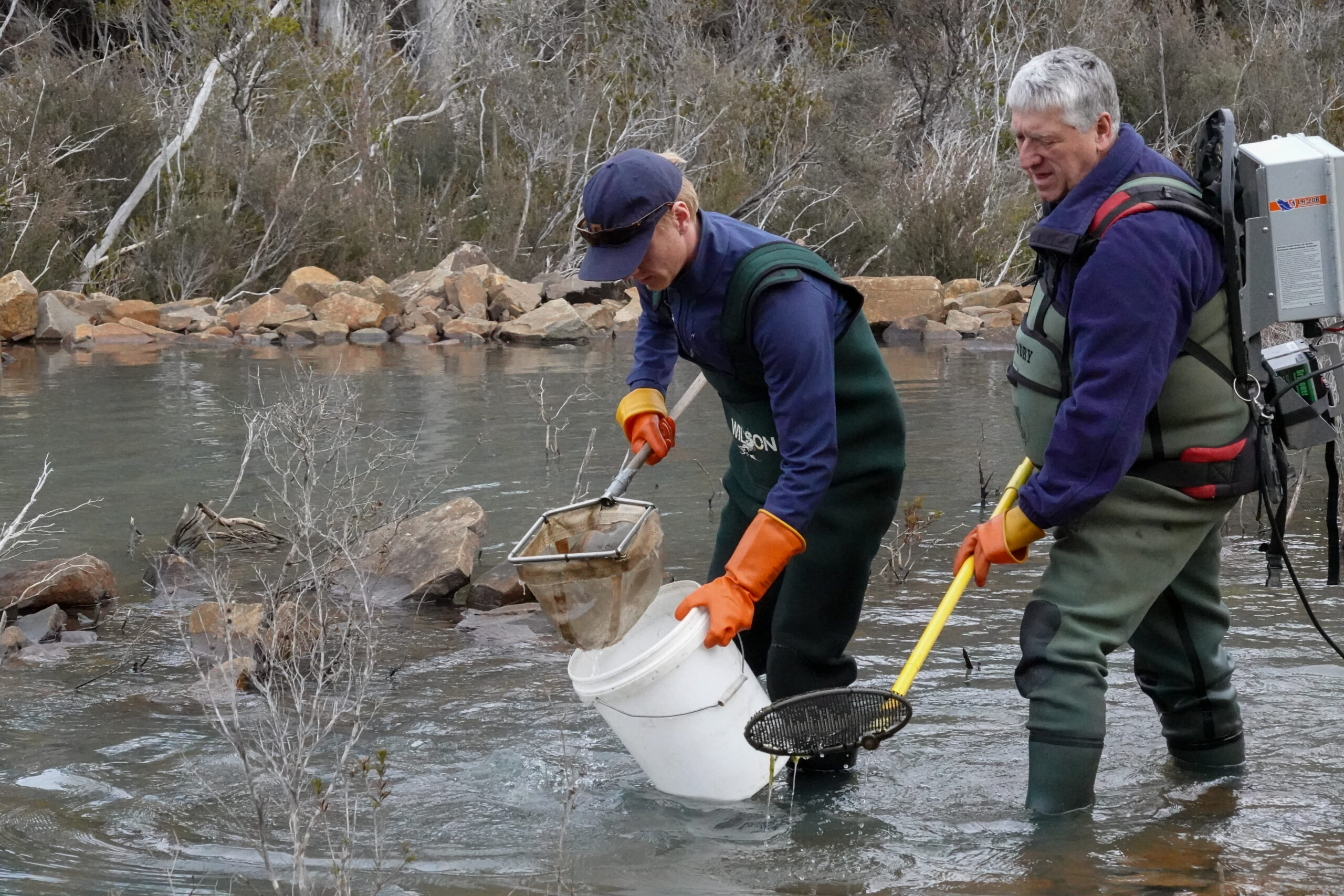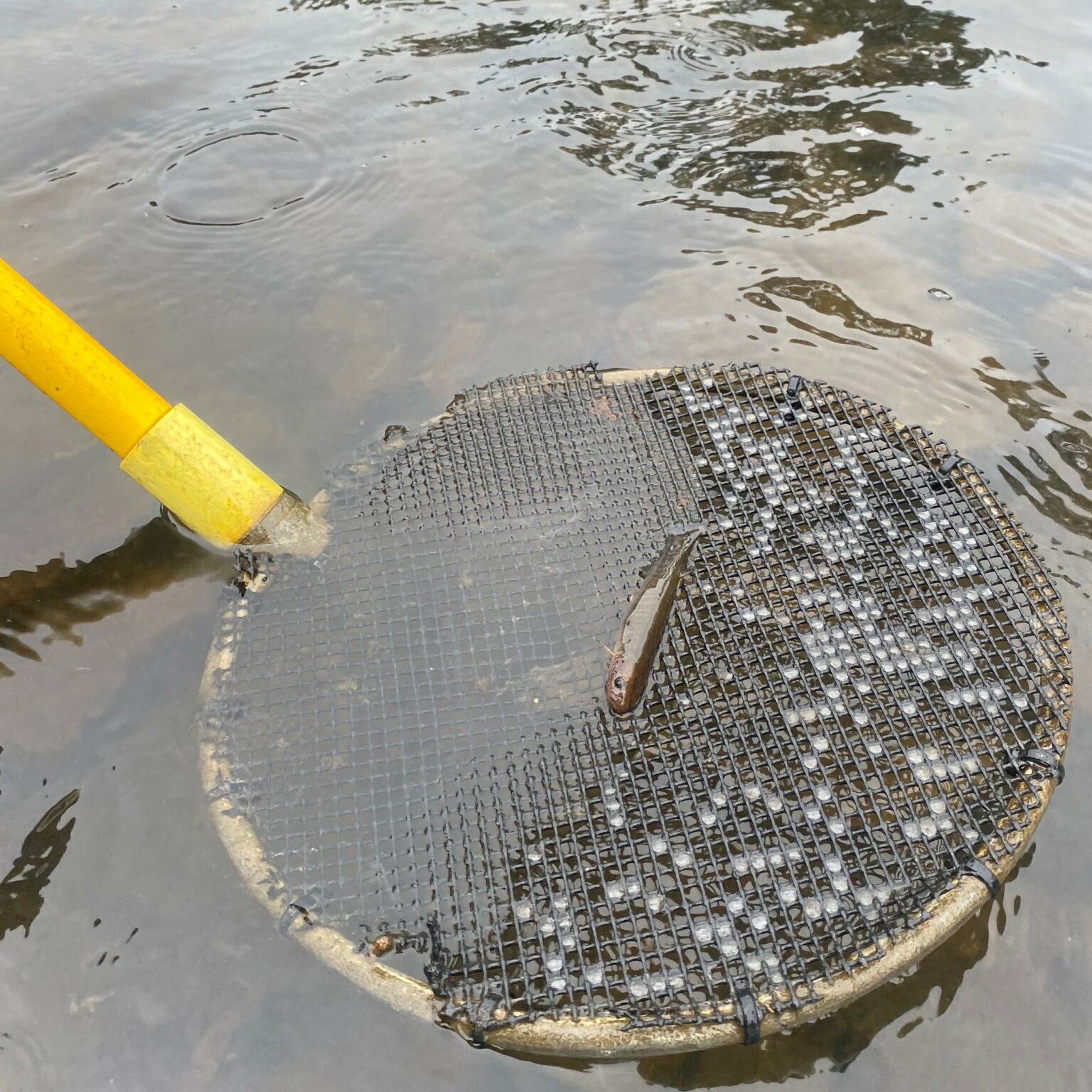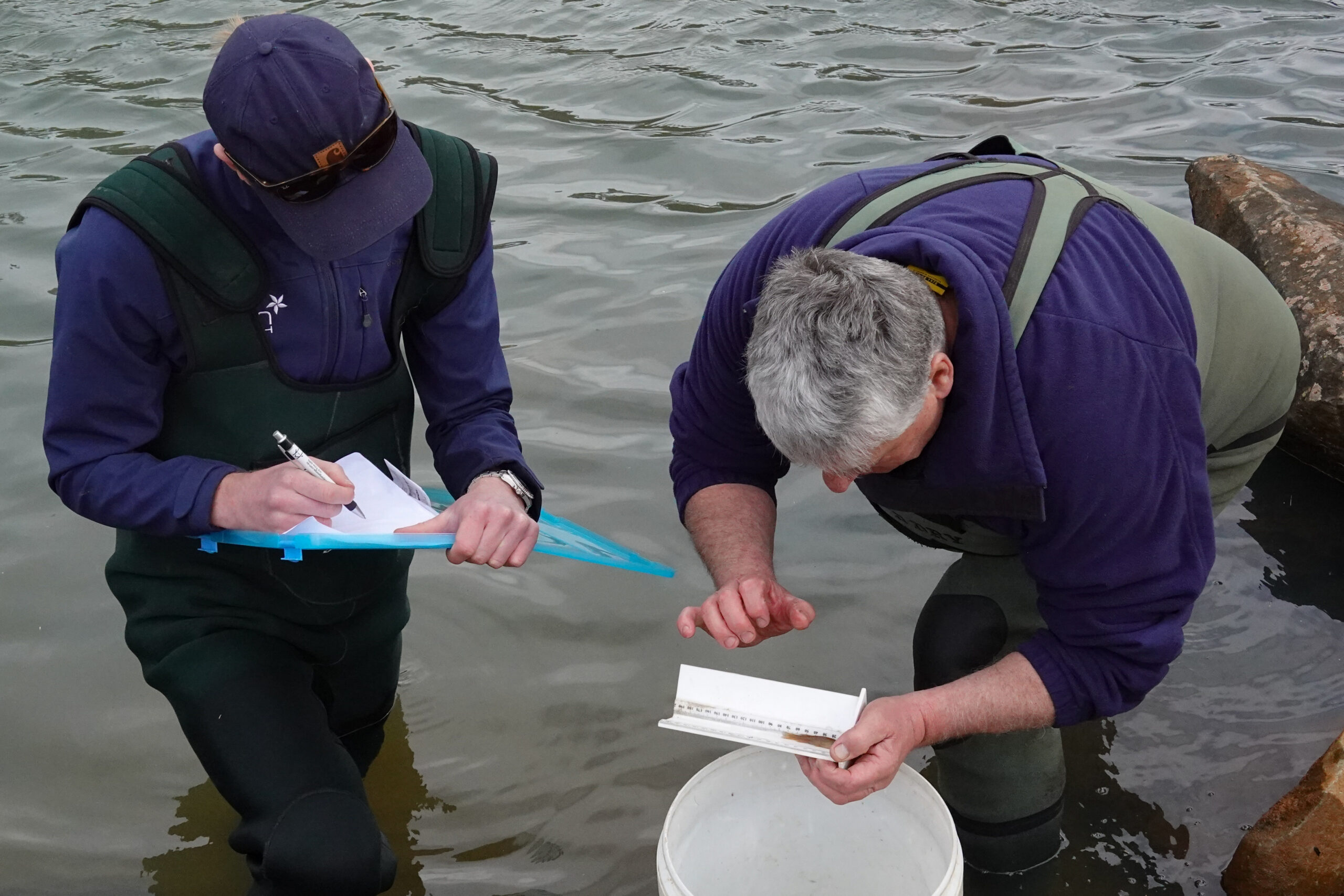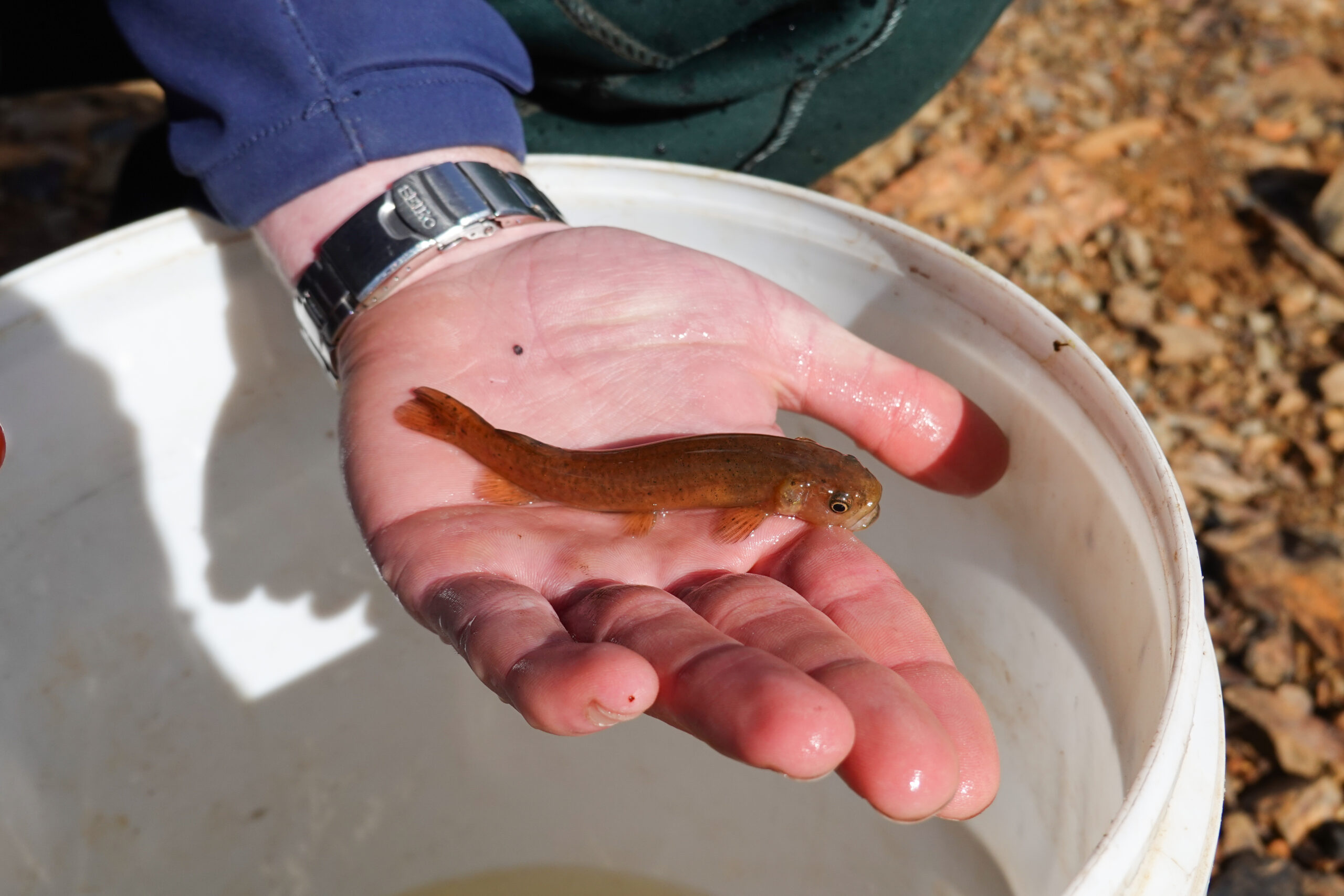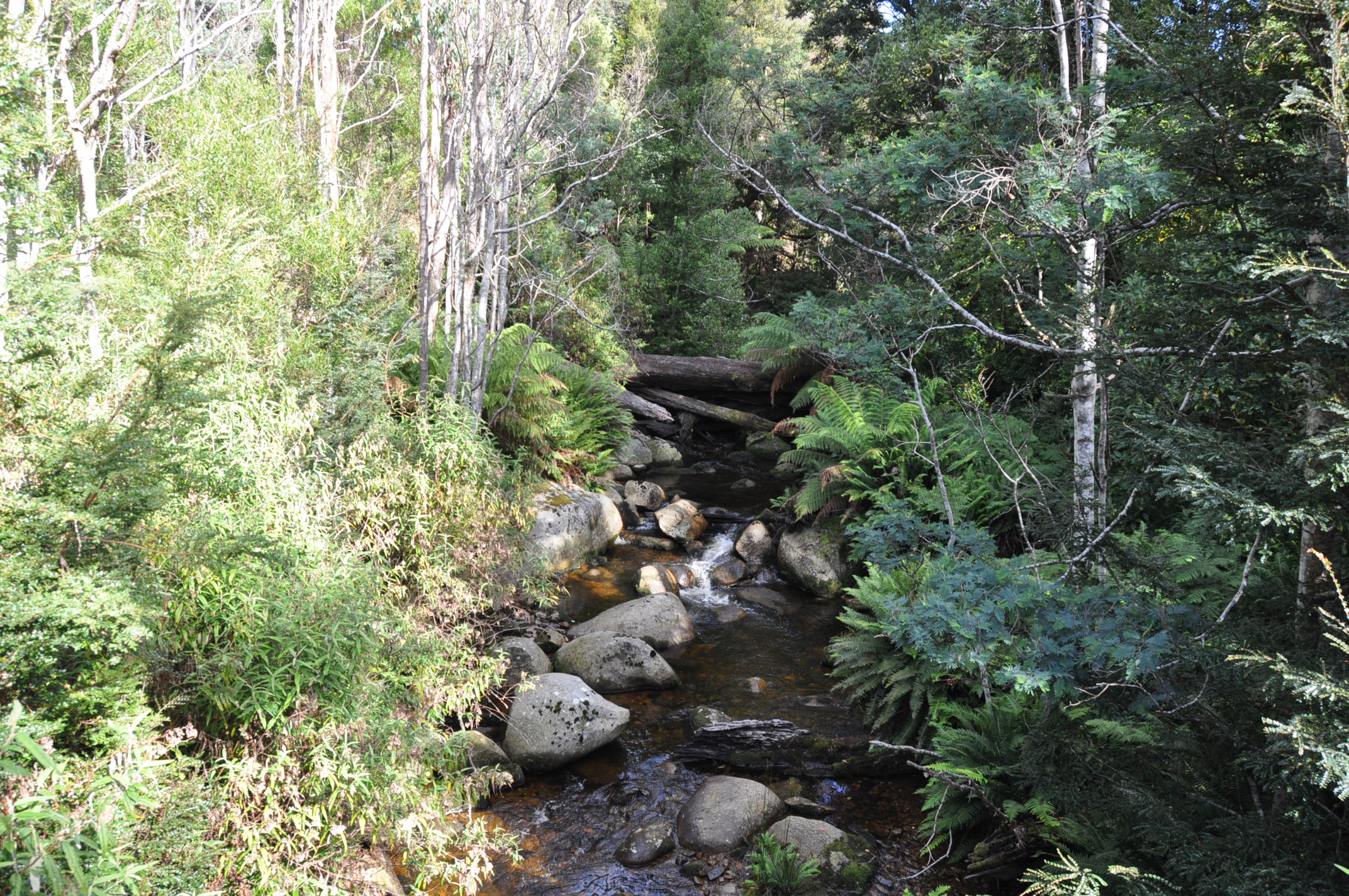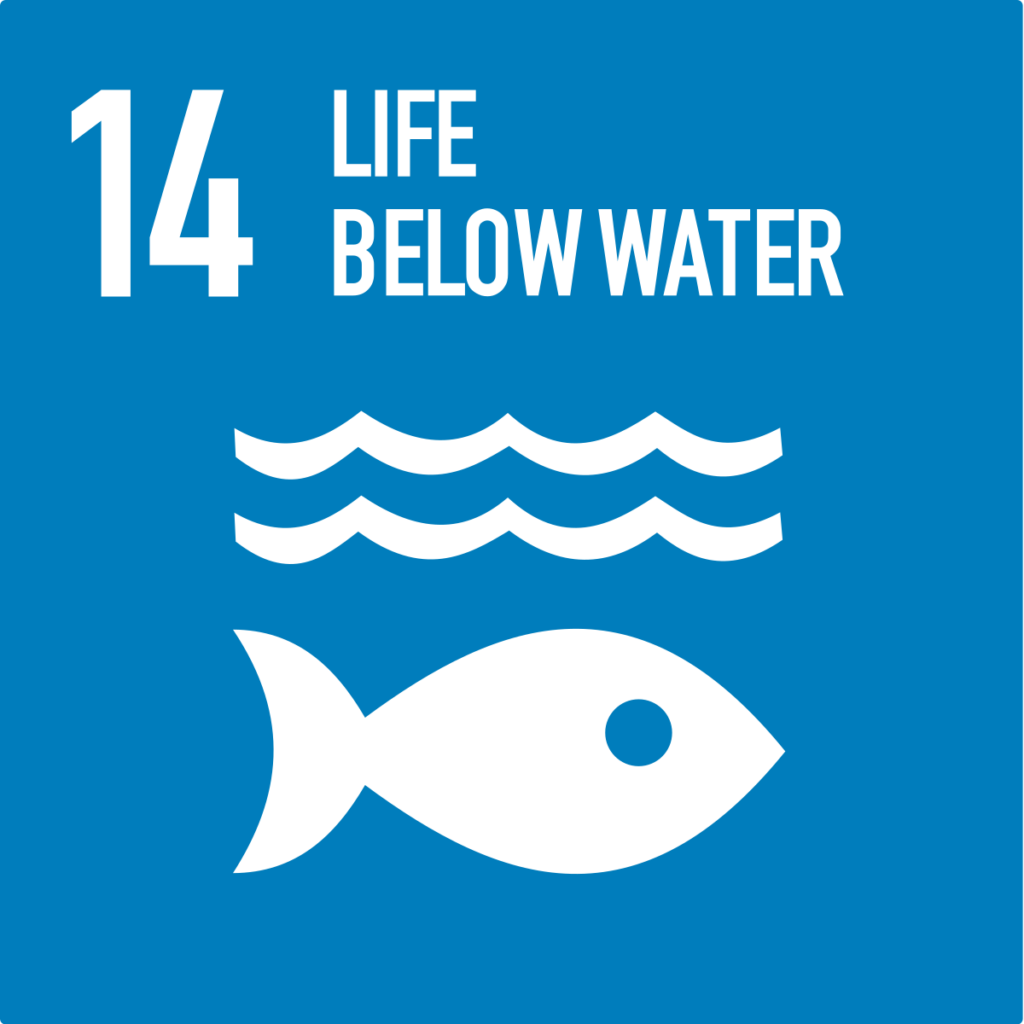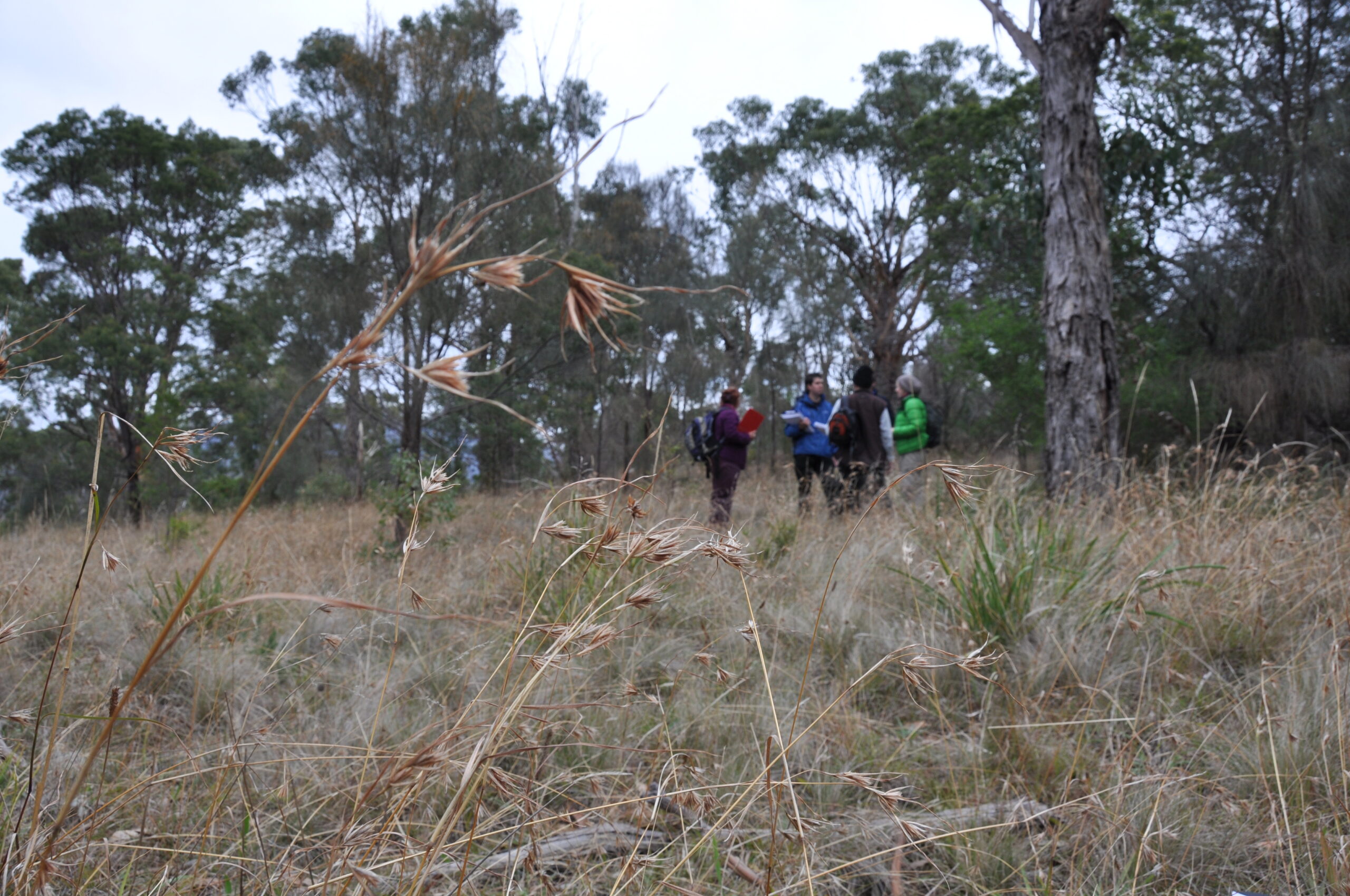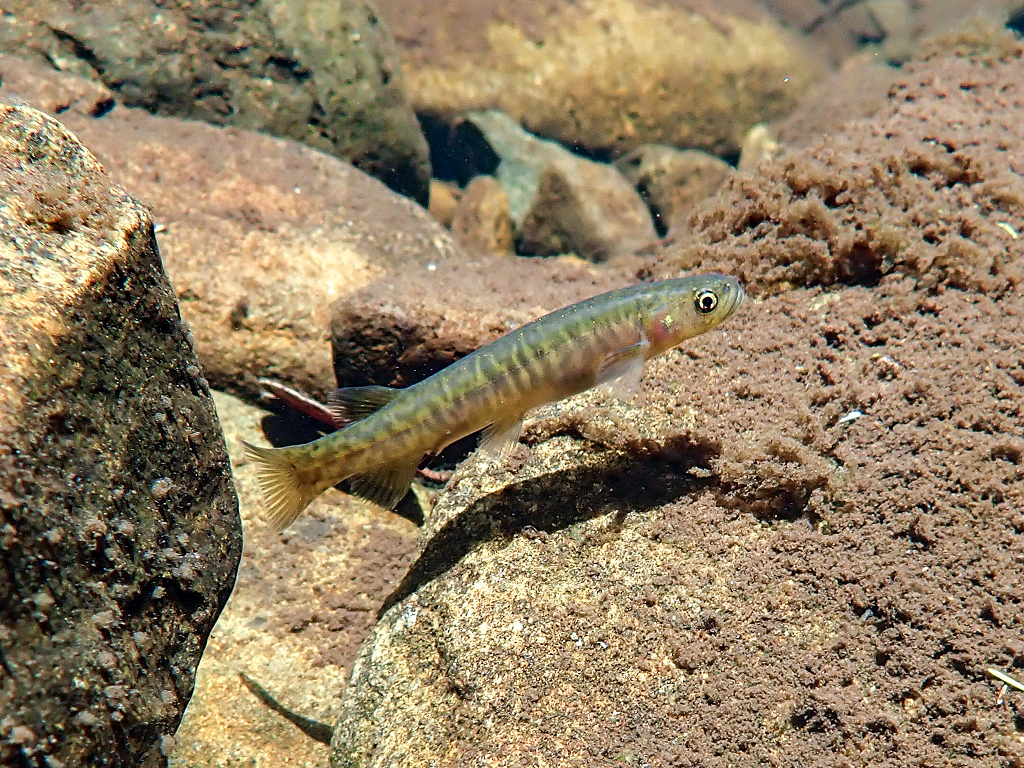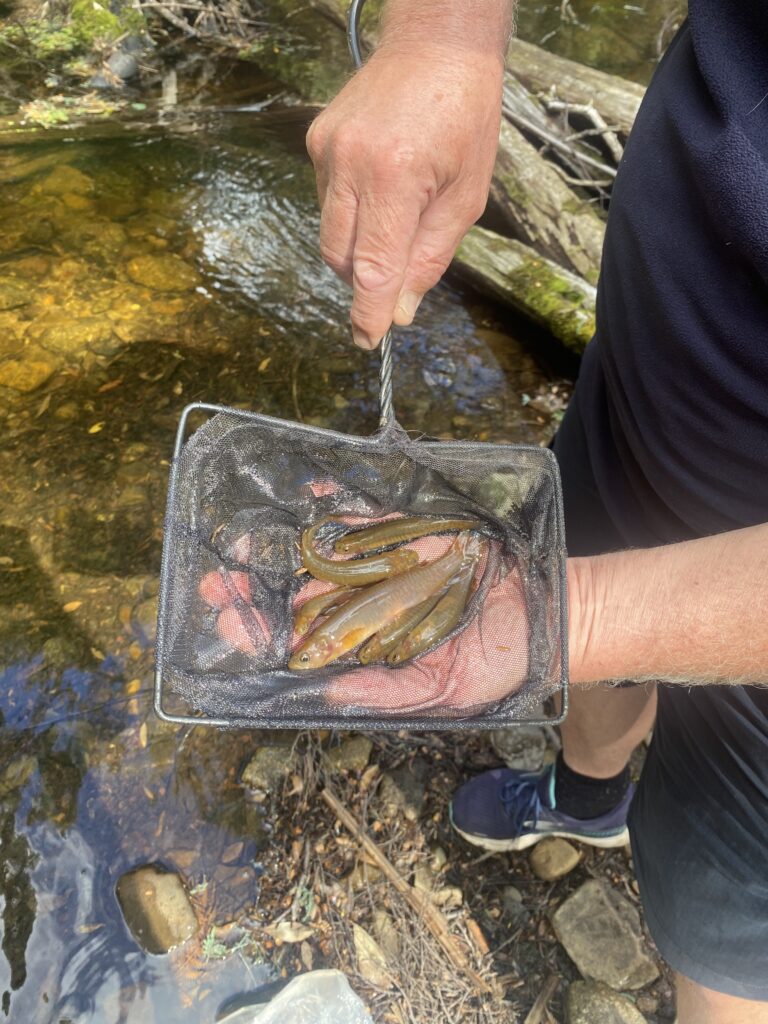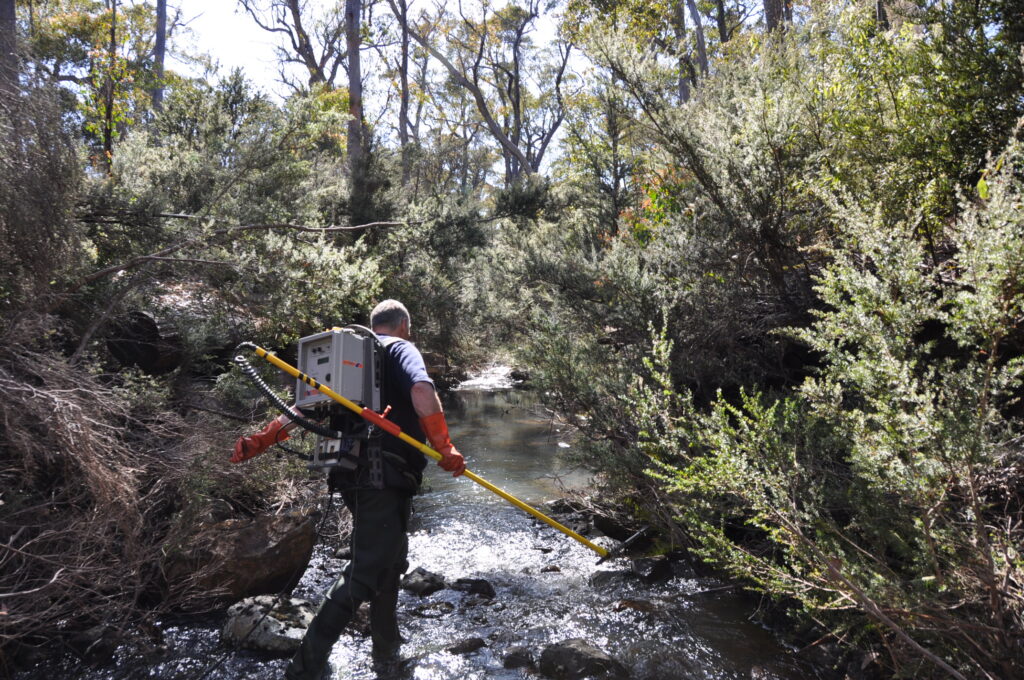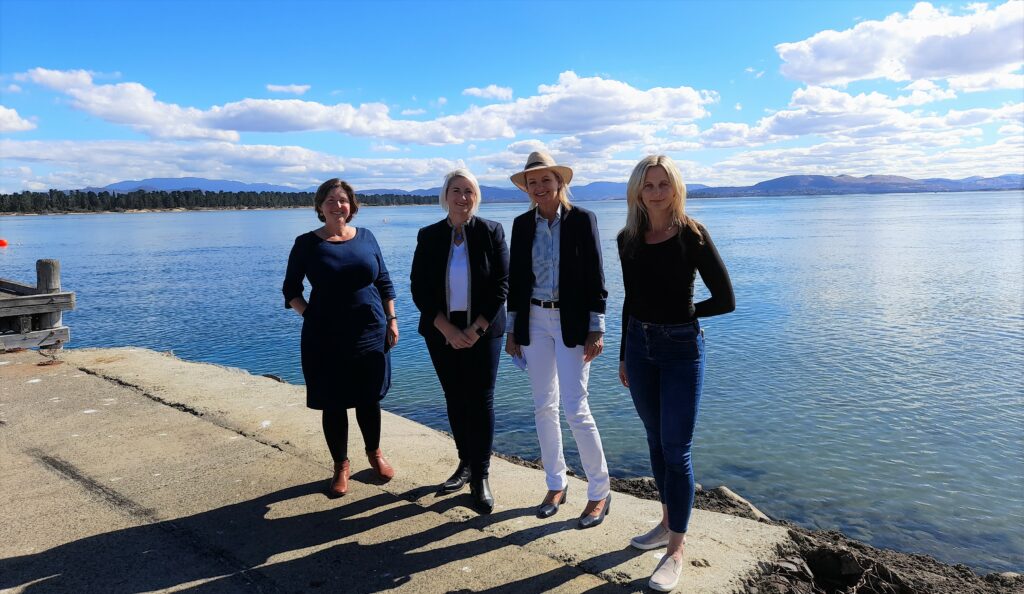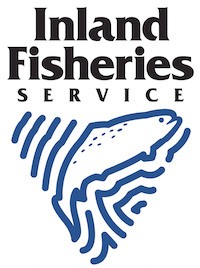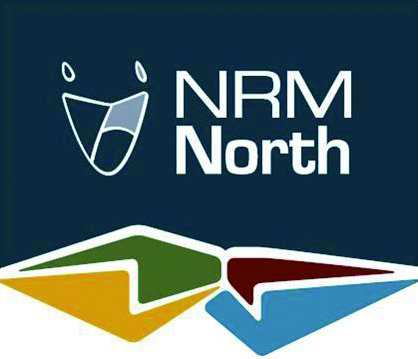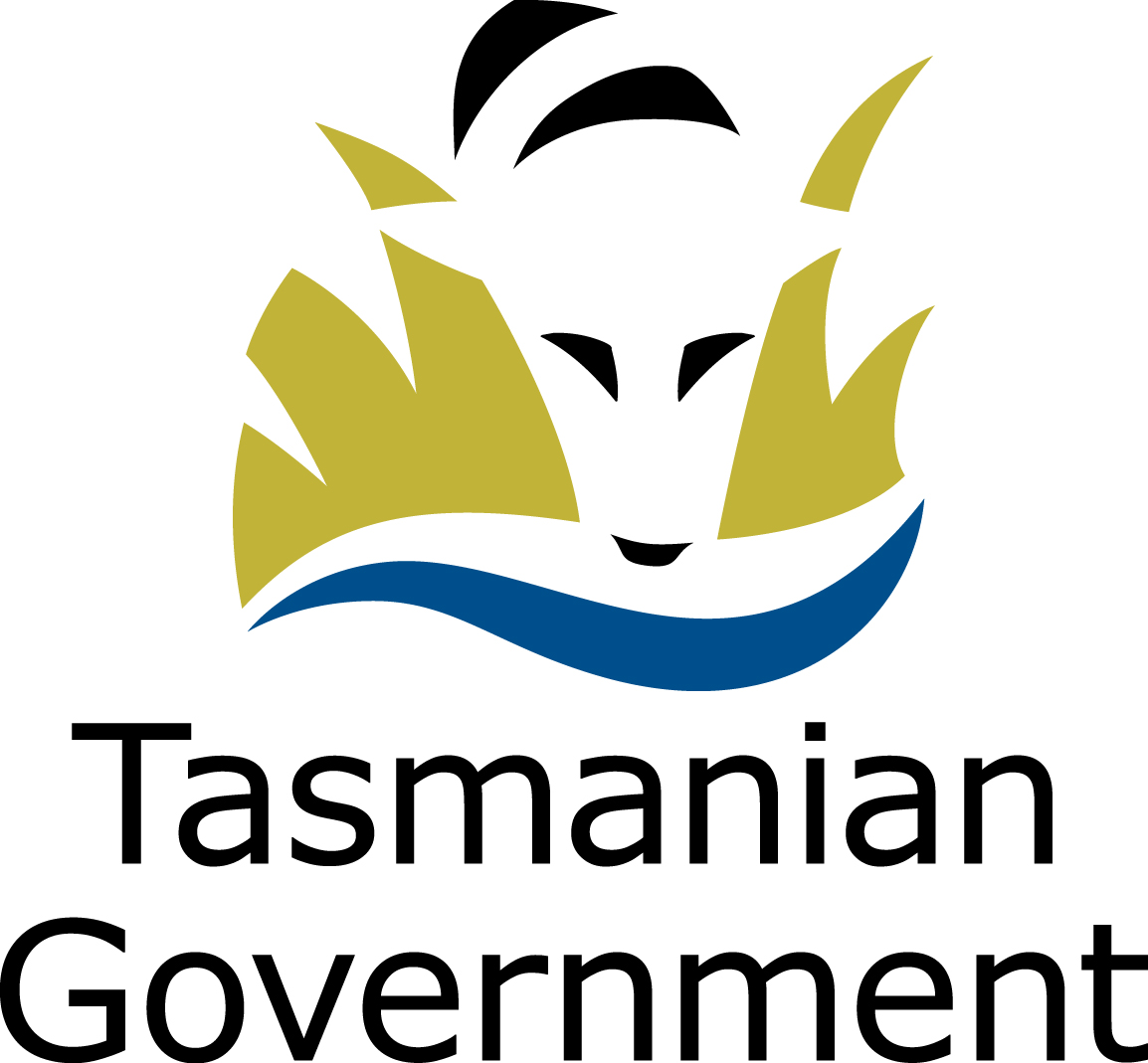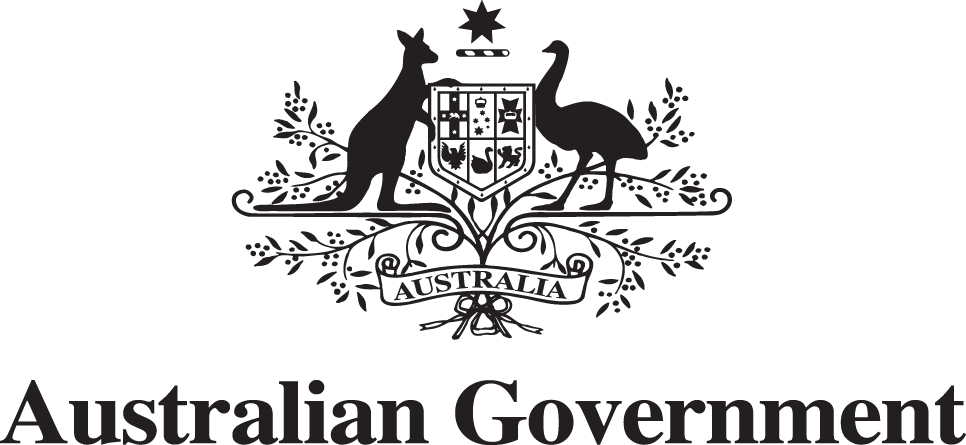Enhancing outcomes for Swan galaxias
Interconnected recovery actions to improve conservation outcomes for the endangered Swan galaxias
Endemic to Tasmania, this freshwater fish is now confined to small, highly fragmented populations in eastern Tasmania. Their population decline has been due to dispersal of invasive, predatory species, including trout and redfin perch, and the fragmentation and isolation of its preferred habitat.
This initiative, funded by an Australian Government’s ‘Saving Native Species’ grant, builds on previous recovery efforts delivered by NRM South (through an Australian Government funded project). Swan galaxias are the only endemic species of Tasmanian galaxiid inhabiting freshwater streams in eastern Tasmania and are an important indicator species for river health and connectivity.
STRATEGY PRIORITY BS7: Threatened FISH
Through this project, we are helping to improve outcomes for the Swan Galaxias across their range,
What we are doing:
Supporting research into long-term habitat trends to assist in future management.
Supporting engagement and awareness in Tasmania’s freshwater fishing community about the impact of introduced fish species such as trout.
Our Approach
This project will improve outcomes for Swan galaxias by;
- Expanding the use of an eDNA marker to assess Swan galaxias distribution for conservation management and inform future translocation strategies;
- Addressing key threats to the species by using climate modelling to determine the long-term viability of habitats;
- Carrying out a feasibility assessment of using captive breeding and invasive species management as conservation strategies, and;
- Undertaking community outreach to educate user groups about the impacts of relocating predatory introduced species.
PROJECT PILLARS SWAN GALAXIAS
Background
This project will implement interconnected recovery actions to improve conservation outcomes for the endangered Swan galaxias (Galaxias fontanus). Endemic to Tasmania, this freshwater fish species now only occurs in small, highly fragmented populations in eastern Tasmania. As the only endemic species of Tasmanian galaxiid inhabiting these freshwater streams, Swan galaxias are an important indicator species for river health and connectivity.
Declining Swan galaxias populations are a result of the increasing dispersal of invasive, predatory species, including trout and redfin perch, and fragmentation and isolation of its preferred habitat. Swan galaxias are extremely susceptible to changes in flow conditions such as drought and flood, which will be exacerbated by a changing climate and altered weather conditions. This will further limit species’ ability to move between locations, resulting in lower genetic exchange between populations.
Working with the Tasmanian IFS and CSIRO, this project is addressing these threats by building upon critical translocation work conducted in early 2023, further establishing and securing insurance populations to ensure that crucial genetic diversity is conserved in habitat that better protects Swan galaxias from the impacts of climate change.
Translocations
As part of our Recovery Actions for Swan galaxias project, NRM South worked with Tasmania’s Inland Fisheries Service and CSIRO to identify suitable new translocation sites. As part of this project, 120 fish from four separate populations were moved to two new locations. The source populations were carefully chosen, with guidance from geneticists from CSIRO and UTAS, to ensure a good genetic variation was maintained.
Additional translocations will be part of this project and will follow the same methodology; moving a select number of fish from their current sites to new areas where they will be better protected from climate extremes and invasive predators.
eDNA Marker
As part of an earlier recovery project, led by NRM South, an environmental DNA (eDNA) marker was developed. This approach was able to detect Swan galaxias DNA in a water sample, meaning that species presence could be confirmed without having to physically observe or capture an individual. This project will continue to use eDNA assessment to determine the presence of Swan galaxias, determine their preferred habitat characteristics and limitations for conservation management, and plan for on-ground habitat restoration actions. The project will also will make further use of this technology to conduct genetic analysis and compare the breeding success of populations translocated in both 1992 and 2023.
Climate Modelling
Climate and weather condition modelling will assess the long-term viability of the existing populations in space and time, and their vulnerability to flood, drought, and other extreme weather events. This information will be used to prioritise translocations of at-risk populations to more secure habitat and mitigate further losses. Catchment-level climate and weather modelling will improve the effectiveness of on-ground interventions and assist the project managers to negotiate short- and medium-term climate challenges and will be carried out by project partners including the Tasmanian Inland Fisheries Service.
Community Engagement
This project will work with angler groups and other key stakeholders to highlight the importance of keeping areas inhabited by Swan galaxias free from non-native species such as trout. Through our engagement activities, we aim to build a sense of stewardship for freshwater systems and river health in the user group. This work will be supported by the Tasmanian IFS and Hydro Tasmania, as trusted angling advisors in Tasmania.
Feasability Assessment
Previous attempts to undertake captive breeding of Swan galaxias and carry out invasive species management within its habitat have both thus far been unsuccessful. This project will incorporate feasibility studies to reassess these actions as viable recovery options for the species, considering recent advancements in technology and knowledge based on successful efforts interstate.
Through a captive breeding feasibility study, we will aim to identify the viability and associated risks, ethics, costs and impacts on existing and future populations of assisted captive breeding and release.
An invasive predatory fish barrier feasibility study will assess the practicality of installing in-stream anti jump barriers at key locations to reduce the threat posed by invasive species dispersal and facilitate management of those species. The study will consider risks to river connectivity and will make recommendations for on-ground actions.
Project Targets
e-DNA studies to improve management approaches
Establishing new populations via translocation
Community outreach to angler community
Investigating invasive species exclusion and management options
Completing a climate and habitat model
Past Projects
Recovery Actions for Swan Galaxias
This 2021-2023 project addressed threats to Swan Galaxias by identifying previously undiscovered populations and selecting sites for on-ground restoration works, supporting the development of eDNA markers for population sampling, translocating 120 Swan Galaxias to new sites to protect genetic diversity and safeguard population size, and carrying out riparian restoration of creek beds at sites that hold critical populations.
Read more here.
Project Timeline
This project will run until November 2025
